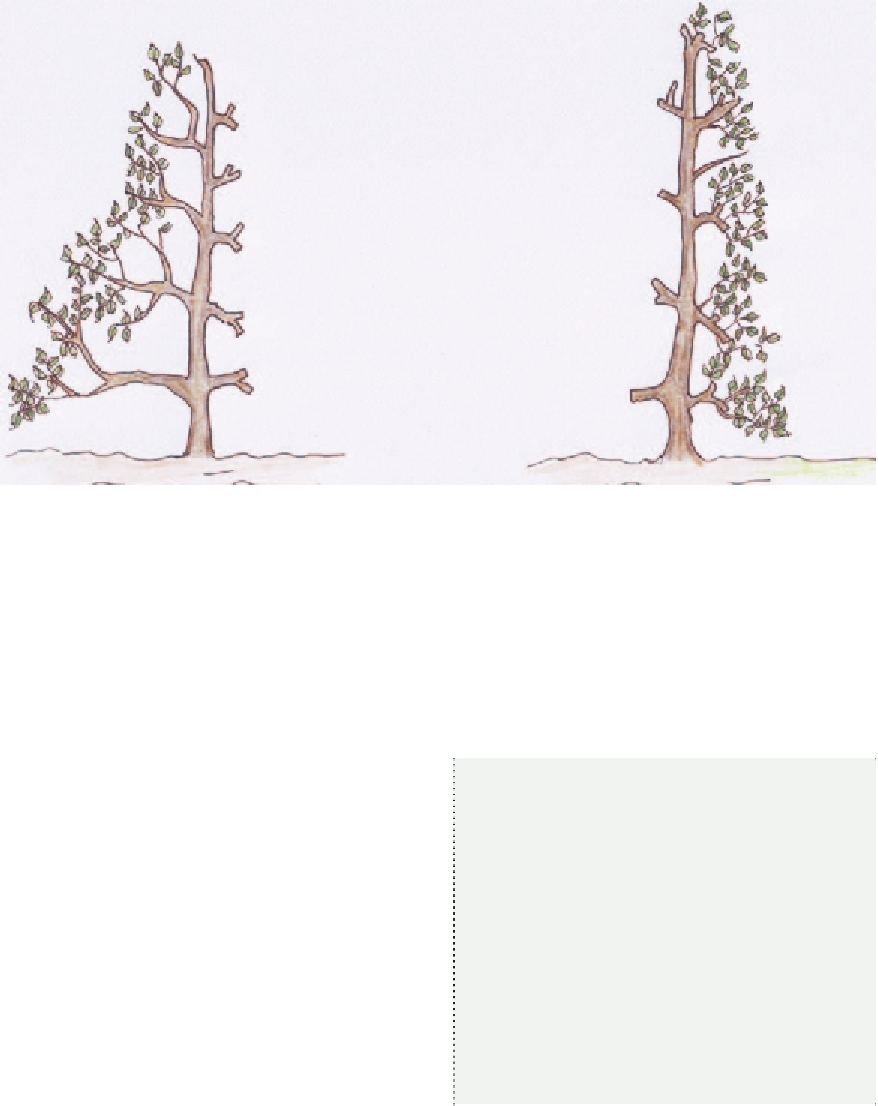Agriculture Reference
In-Depth Information
Figure 4.67
Renovating a hedge.
looks stable and grounding, one with a
distinct overhang at the top becomes a series
of bare stems with the beauty and foliage out
of visual reach; in fact, an avenue or border of
small trees. If there is no light at the base
there will be no foliage.
its selection. Hedging plants that may become
pest plants can be sheared before their seeds
or fruits ripen and disperse. Otherwise
neaten up as you see fit. Autumn is a good
time in areas without frost; after the spring
flush of growth in cold climates.
As for formal hedges, prune at planting
to create bushy growth (see Figures 4.59
and 4.60). In their second year, let them
develop and only in the second dormant
season shorten back wayward branches and
shorten the stems to encourage plenty of
side shoots.
HEDGES
• Plants that regrow from old wood are the
easiest to manage
• Always have the base of the hedge wider at
the base than the top
• Choose cloned (asexually propagated)
plants; they will grow at a uniform rate
• Keep clippers/shears parallel to the surface
of the hedge
• Clip/shear from the bottom up
• Renovate only one side of a hedge at once
After this time prune your hedge as if it was a
single informal shrub and according to its
type (see 'Ornamental shrubs', page 51).
The timing of clipping or shortening back
branches will be dependent on when your
shrub flowers or fruits, if that is the reason for



